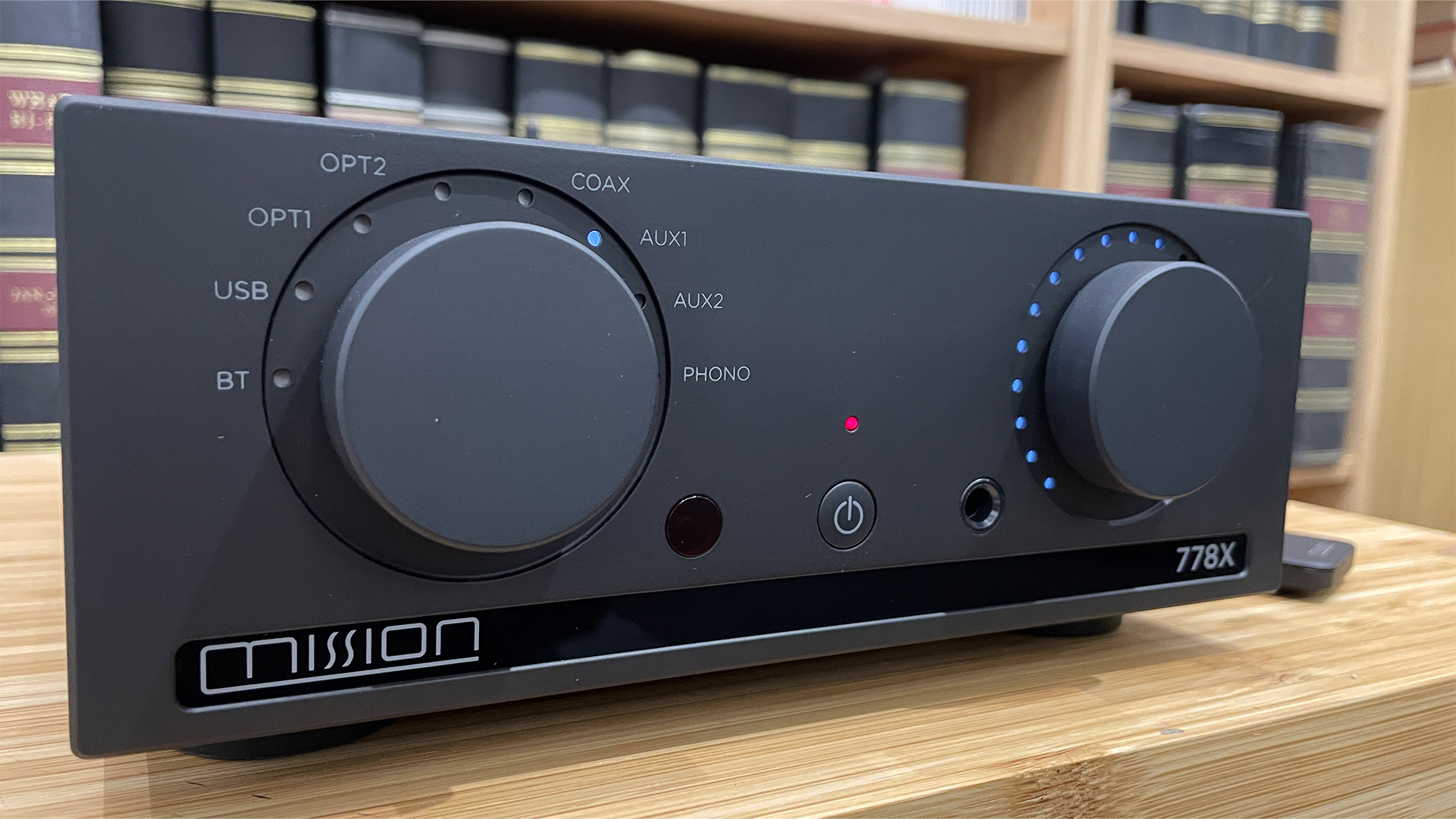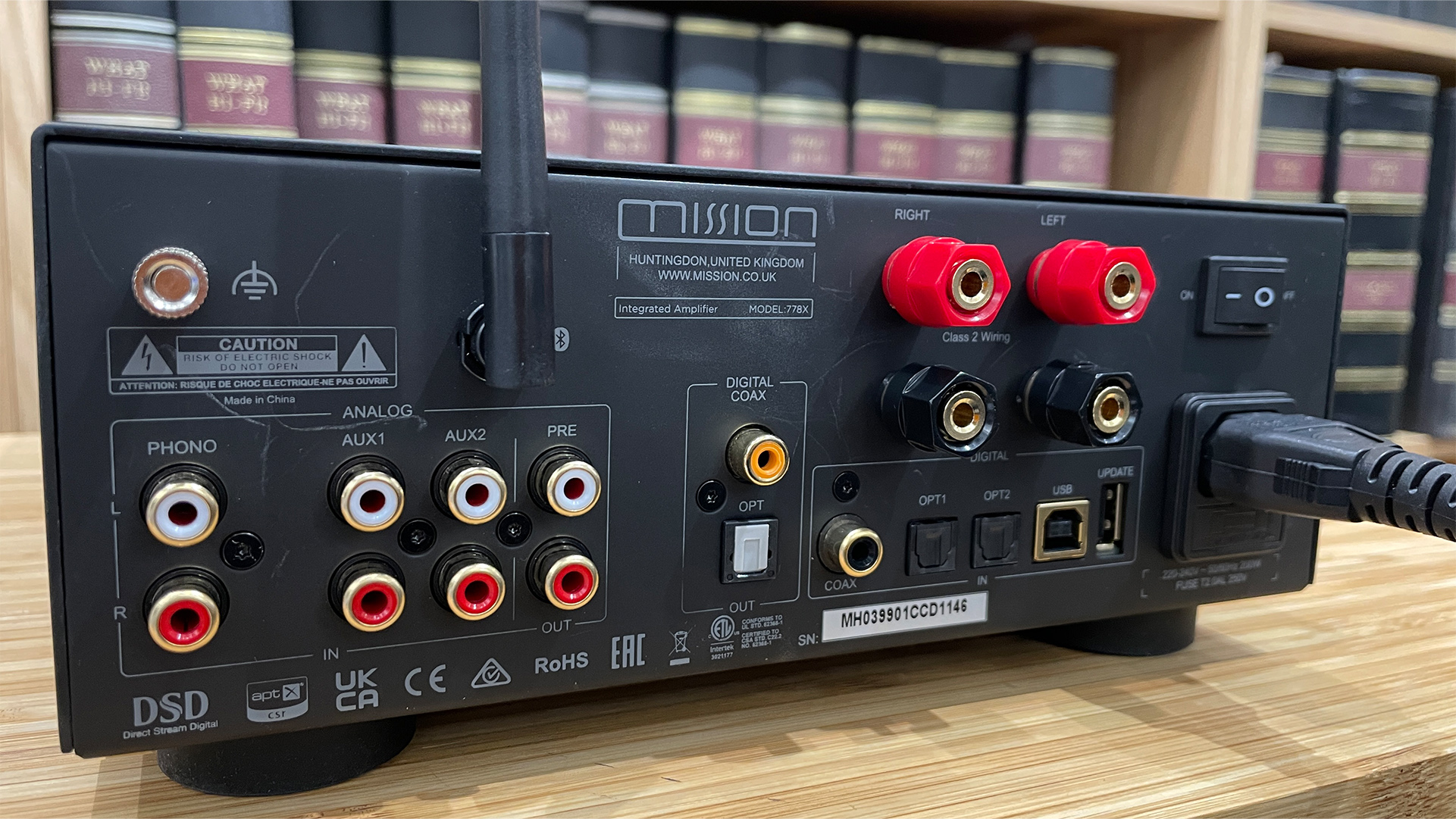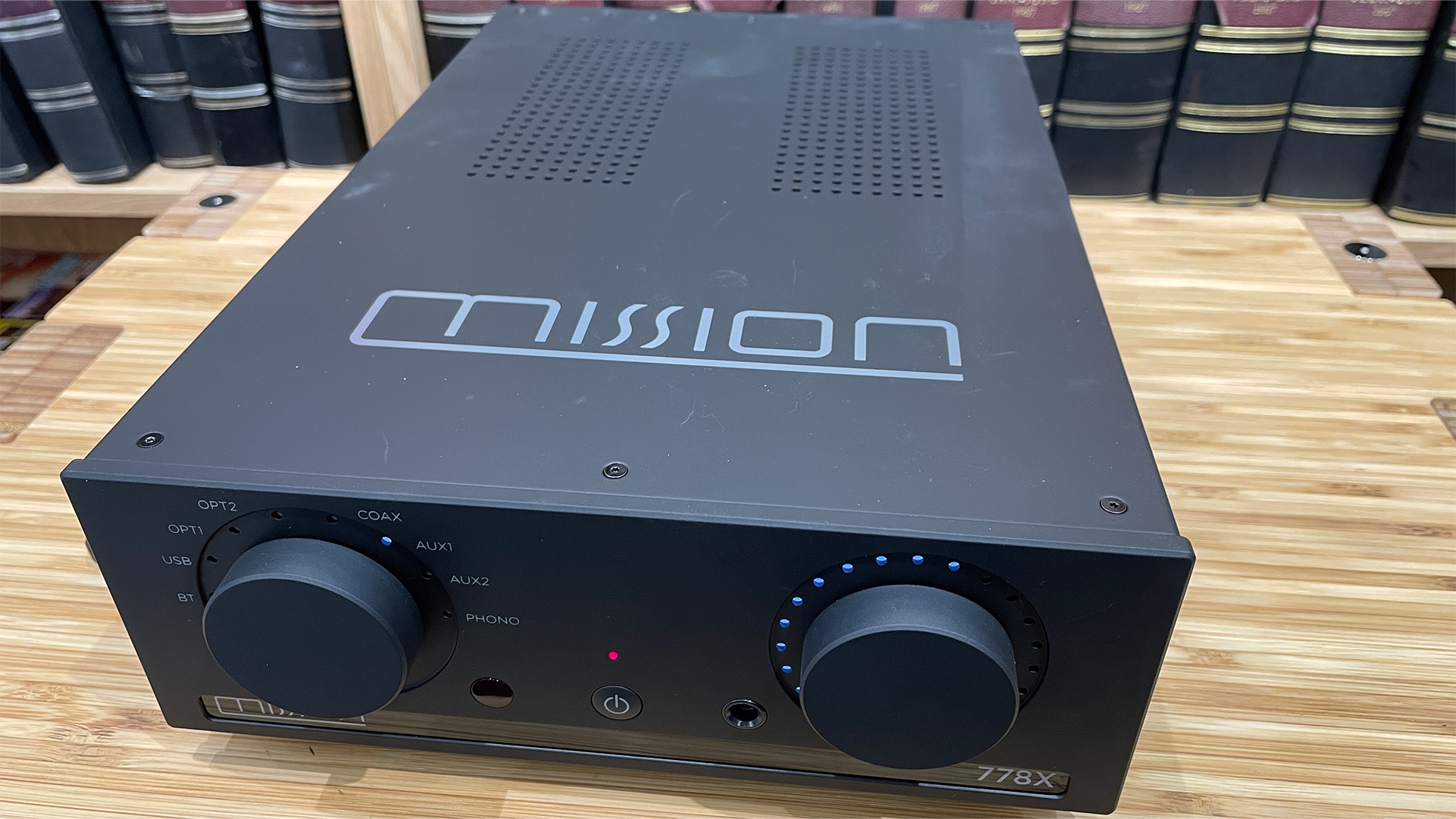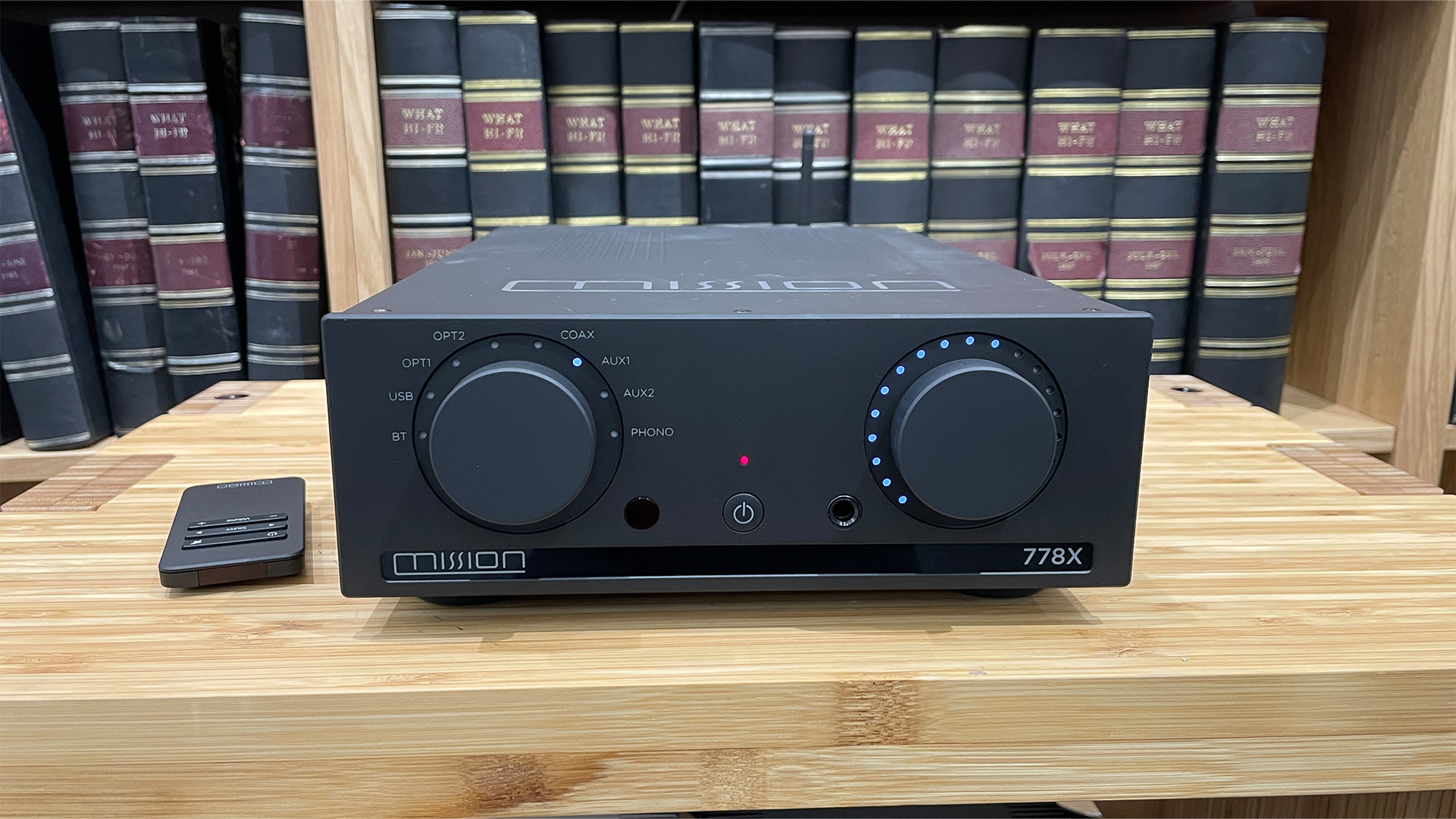What Hi-Fi? Verdict
Mission’s 778X is a superb integrated amplifier with a wonderfully balanced sound and a comprehensive spec sheet
Pros
- +
Wonderfully even-handed and unobtrusive presentation
- +
Well-equipped
- +
Great build
Cons
- -
No shortage of tough competition
Why you can trust What Hi-Fi?
Today, Mission is known as a specialist speaker manufacturer, but that wasn’t always the case. Back in the early Eighties, it was a far more diverse brand that made all parts of the audio chain from turntables, tonearms and cartridges to CD players right through to speakers.
The company’s first amplifiers were hugely ambitious premium designs like the 776/777 pre/power combination, but it wasn’t long before it produced a more affordable, though hardly less distinctive, integrated design called the 778. The 778 only lasted a few years before its design was evolved into the first products of Mission’s then-new sub-brand, Cyrus.
Build & design

While that original 778 was well-received, it is fair to say that the visually similar Cyrus One and Cyrus Two amplifiers went on to make a bigger impact on the world of hi-fi. But that shouldn’t detract from the new 778X we have on test here. Apart from being built into a half-width casing and sharing the name of the company’s first integrated amplifier, there is very little here related to that original design.
Regardless, this is a hugely competitive product that doesn’t need any help from nostalgia to appeal. It is well equipped by the standards of its peers. There is a moving magnet phono stage alongside a pair of line-level inputs. Digital compatibility? Yes, the 778X has a pair of optical inputs, a single coax input and a USB Type B port. The internal DAC module is built around the long-running ESS Sabre ES9018K2M chip and can cope with 32-bit/384kHz PCM and DSD256 music files through the USB and up to 192kHz PCM with optical and coax.

Type Integrated
Power 45W per channel
Phono stage? Yes (MM)
Inputs Line level x2, MM phono, optical x2, coax x1, USB (Type B) x1
Outputs Pre-out
Bluetooth? Yes (Bluetooth 5.0, aptX)
Headphone output? Yes (6.3mm)
Dimensions (hwd) 9.8 x 23.6 x 38.6cm
Weight 6.3 kg
That’s not all – aptX Bluetooth streaming is on the menu too, as is a front-panel mounted 6.3mm headphone socket. Of course, there is a remote in the box – this isn’t the Eighties after all – and it is a simple, small but effective handset. Surprisingly, Mission doesn’t supply the CR2025 button battery required to make it work, so you may need to take a trip to the shops.
The 778X’s casework’s industrial design may not be to all tastes, but there is no denying the high level of fit and finish. The casework feels solid and we like the smooth yet substantial action of the main rotary control dials. Overall, this is certainly one of the best-built integrated amps we’ve come across at this level.
Mission’s parent company IAG owns several brands, including Quad and Leak, so it comes as little surprise that there are electrical circuit similarities between the Quad Vena II, Leak Stereo 130 and this 778X integrated. The rated power outputs are identical at 45 watts per channel into 8 ohms, rising to 65 watts per side as the impedance halves. Compare the features and general specifications, and there’s little in it bar small differences in the input sensitivities of the line and phono input of the Mission compared to the other two.
The latest hi-fi, home cinema and tech news, reviews, buying advice and deals, direct to your inbox.

Does it matter that the three are closely related? Not in our view. It makes economic sense for a parent company like IAG to design things in this way, and as long as each product still reflects the respective brand’s values, then there is no problem. We haven’t officially tested either the Quad or the Leak, so can’t comment on the relative performance of either, but at the time of writing the Mission costs considerably less than both, meaning it has the potential to be the best value.
There is still plenty of tough competition at this price level. There is Rega’s integrated amplifier duo of io (£420 / $725) and Brio (£549 / $1100) to consider and mighty contenders like Arcam’s award-winning A5 (£749 / $699), yet we feel the 778X is good enough to remain part of the conversation at its £549 / $549 price tag.
Sound

We tested the Mission amp in two different systems. The first is our reference set up of Naim ND555/555 PS DR music streamer and ATC SCM 50 speakers and the other, a Cyrus CDi CD player with Bower & Wilkins 607 S3 standmounters. In both cases, we carried on using the amplifier long after our official test process was over. That is a good sign. We’re hardly short of more premium alternatives in our test rooms, but there was something about the 778X’s well-judged balance that kept us listening.
This is a tidy-sounding product; one that digs up plenty of detail and is composed enough to arrange all that information into a cohesive and musical whole. As we listen to Mount The Air by The Unthanks, it doesn’t take long for our attention to shift from what the 778X sounds like to just how much we’re enjoying the song. Nothing in the sound sticks out or annoys, and that’s important.
This integrated has a nice, open balance that retains enough in the way of natural warmth to avoid charges of sounding clinical. It helps that dynamics are rendered in a controlled but expressive way and the music’s changing momentum is conveyed with conviction. Sure, the very best of its rivals show even more enthusiasm when rendering these aspects of the sound, but the Mission works well enough in its own right.
We like the Mission’s way with voices, and anyone familiar with The Unthanks knows that the folk group delivers some of the most beautiful and expressive vocals around. This is obvious through the 778X thanks to a lovely blend of bite, sweetness and insight at mid-to-high frequencies. If you feed it with an aggressive source or recording it won’t hide any shortcomings, but there is enough in the way of refinement to stop things getting nasty. This is a valuable trait in an amplifier that is as likely to be partnered with budget components as it is those further up the price and ability ladder.
Dvořák’s New World Symphony is a demanding classical piece but the Mission delivers enough in the way of scale and authority to satisfy. A power output of 45 watts per channel sounds relatively modest, but as long as you are sensible with partnering speakers and don’t have an unusually large listening space we think the 778X will cope just fine. It is composed with demanding music such as this, and within the expectations of its class, does well at capturing the grandeur and emotion of the music.

One of the most impressive aspects of this amplifier is just how consistent it sounds through its various connections. While everything we’ve described so far applies to the line-level inputs, the story is similarly positive through the trio of digital options. The DAC module fitted here is a good one, retaining the crisp yet forgiving balance we hear through the analogue inputs. We try a range of recordings from Let It Bleed by the Rolling Stones (24-bit/88.2kHz) to the DSD of Stevie Wonder’s Innervisions, with Mahler’s Symphony No.4 in between and the Mission copes admirably. It sounds balanced and interesting, even at lower volume levels.
The good news continues when we plug our Technics SL-1000R/Vertere Sabre MM record player into the 778X’s moving magnet phono input. It is a decently quiet circuit that retains the character and liveliness we enjoy through the other inputs. We have a pleasant afternoon spinning records as diverse as Nitin Sawhney’s Human and Orff’s Carmina Burana.
Verdict

It should be clear by now that the 778X is a fine all-rounder. It even sounds good through the headphone output and that isn’t always the case with amplifiers at this level. This Mission is up against some tough competition, and maybe its slightly understated sonic manner won’t draw the attention as strongly as its rivals, but make no mistake, this is a well-rounded product that deserves plenty of success. Retro appeal or not, the Mission 778X convinces.
SCORES
- Sound 5
- Build 5
- Features 5
MORE:
Read our review of the Arcam A5
Also consider the Cambridge Audio CXA61
Read our Rega Brio review
Best stereo amplifiers: the best integrated amps you can buy
What Hi-Fi?, founded in 1976, is the world's leading independent guide to buying and owning hi-fi and home entertainment products. Our comprehensive tests help you buy the very best for your money, with our advice sections giving you step-by-step information on how to get even more from your music and movies. Everything is tested by our dedicated team of in-house reviewers in our custom-built test rooms in London, Reading and Bath. Our coveted five-star rating and Awards are recognised all over the world as the ultimate seal of approval, so you can buy with absolute confidence.


